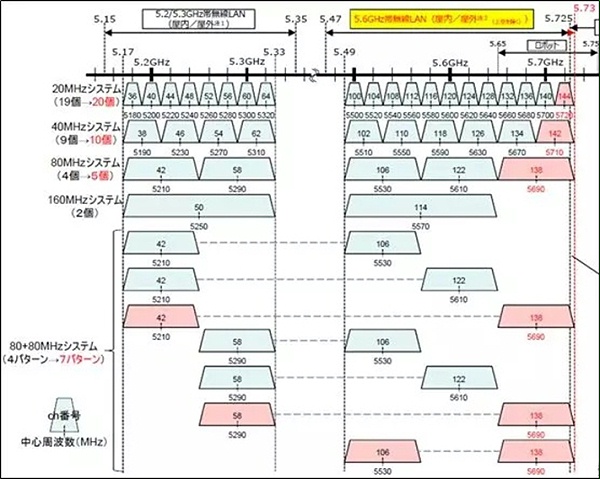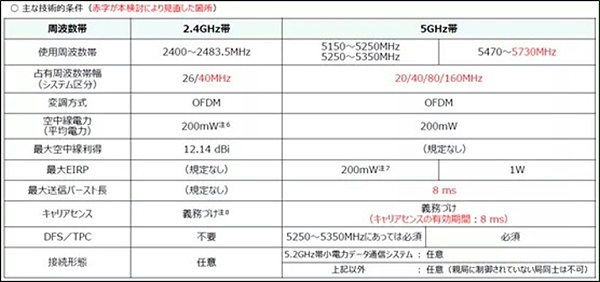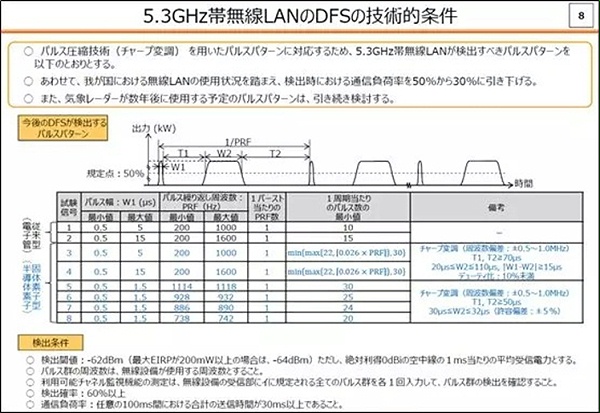On July 11, 2019, the Japanese MIC released the official newspaper, and updated the technology of the WLAN part. The transition period for the new and old versions will last for one year, from July 11, 2019 to July 10, 2020, and from July 11, 2020, the new version will be enforced.
In order to prepare sellers of related products such as export wireless in advance, WALTEK the following changes are explained in detail for the changes after the MIC standard is updated.
1.Expand the W56 operating range
In order to alleviate the congestion of the W56 channel and improve the utilization of the high-speed wireless LAN, the operating range is expanded from 5470 to 5725 MHz to 5470 to 5730 MHz. After the range is expanded, the available channels are increased:
CH144 (20MHz system), CH142 (40MHz system), CH138 (80MHz system); 80 + 80MHz system combination has also increased, the number of channels for high-speed communication (80/160/80 + 80 MHz system) increased to the previous number 1.5 times.

2.Introducing the IEEE 802.11ax standard
In order to improve the transmission speed of the wireless Lan system, the IEEE 802.11ax standard is introduced, and the throughput of the 11ax and the 11ac can be increased by at least 4 times. When the 11ax was introduced, the technical requirements were also revised. The main change was the OBW:
①2.4G band OBW Limit correction:
a. There is no change for the 20MHz system, Limit is still 26MHz;
b. For 40MHz systems, Limit is corrected from the original 38MHz to 40MHz.
②5G band OBW Limit correction:
19.7MHz→20MHz(20MHz system)
38MHz→40MHz(40MHz system)
78MHz→80MHz(80MHz system)
158MHz→160MHz(160MHz system)

③Other amendments:
a. The Transmission Burst Length Limit of the 5 GHz band is corrected to 8 ms (the original Limit is 4 ms);
b. The Carrier Sense Capability in the 5 GHz band has a new Limit of 8 ms.
3.W53 DFS test needs increase
In order to share frequencies with meteorological radars in WLANs in the 5.3 GHz band and to adapt to trends in meteorological radar technology, new W53 DFS test requirements have been added. The main changes are as follows:
a. The flow rate is reduced from the previous 50% to 30%;
b. The radar type has been increased from the previous two to eight. The radar parameters are shown in the figure below;
c. The success rate is consistent with the previous requirements and needs to be above 60%.

The Water Test Group was founded in 2003 and is headquartered in Shenzhen. It is an independent and professional third-party testing and certification organization. It has three major strength brands: Water Test, Iridium Test, and Sentence Test, as well as various branches in Foshan, Dongguan, Zhongshan, Suzhou, Ningbo, Hunan and Hong Kong. The service network covers the whole country.

